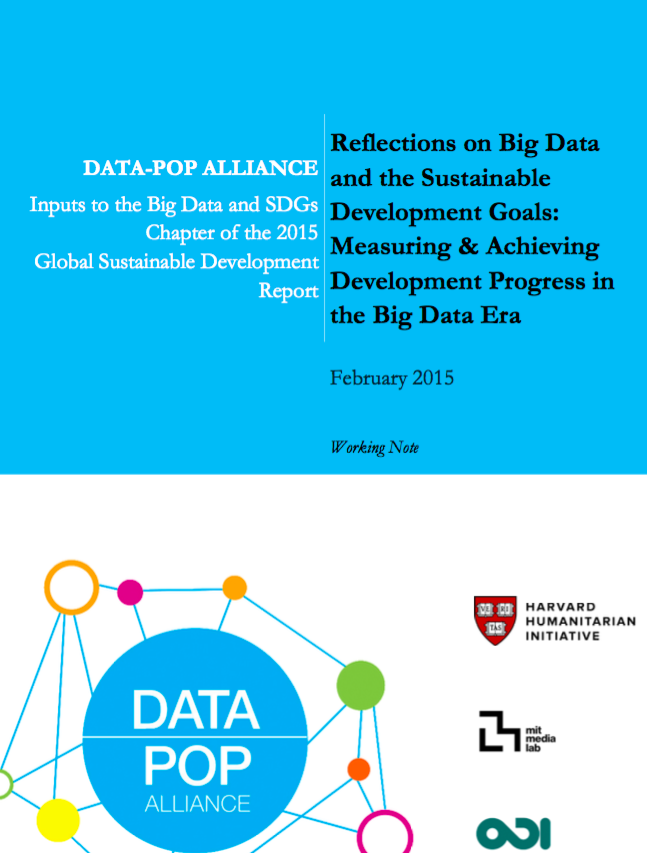This Working Note was written by Emmanuel Letouzé and served as an input to the Big Data and SDGs Chapter of the 2015 Global Sustainable Development Report.
Whether and how Big Data could loosely “contribute to the SDGs”—in other words, and in broad terms, the collision and intersection of these two hot topics in the public development discourse—has received significant attention in recent months. Much of this attention focuses on ways in which Big Data may help monitor the SDGs—with examples of such uses being routinely put forward, in the area of poverty monitoring using cell-phone activity using Call Detail Records (CDRs) analytics, for instance. By and large, the discussions are almost exclusively about measurement, and much less attention is paid to issues of achievement.
Quantifying and tracking development processes using ‘new kinds of data’ emitted by humans, the bulk of which corresponds to what Sandy Pentland has referred to as ‘digital breadcrumbs’, i.e. passively emitted structured data like credit card of phone transactions, and new analytical techniques falling under the umbrella of Big Data analytics, indeed holds real promise. It is now largely undisputed that “Big Data can provide alternative measures of poverty and welfare”.
As is now well known but is worth restating, dosing so it also carries significant challenges and uncertainties, methodological, technical, institutional, as well as areal risks to individual and group privacy and safety. Further, the measurement approach alone does not cover the whole spectrum of ways in and channels through which Big Data as an entirely new ecosystem could impact—contribute to or hamper—human progress as called for and measured by the SDGs.

